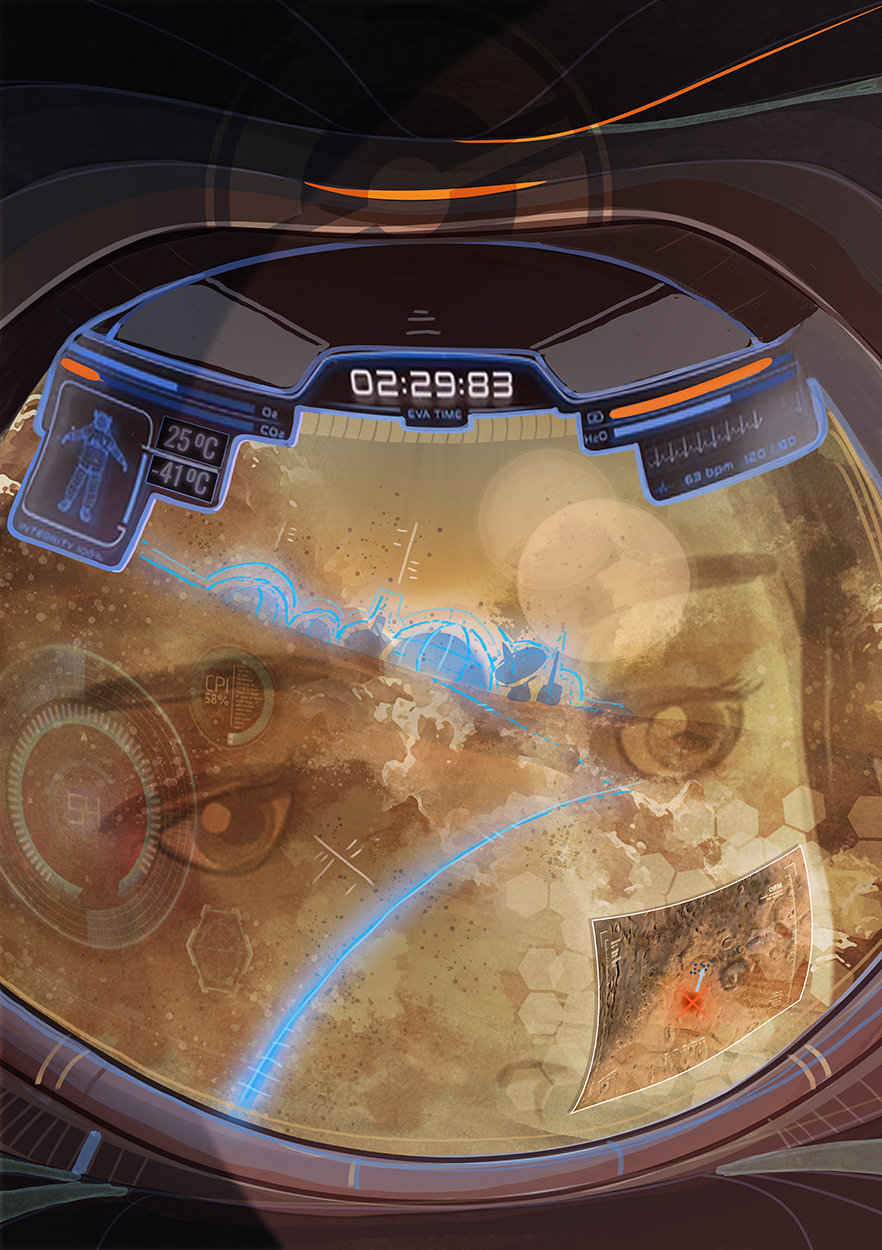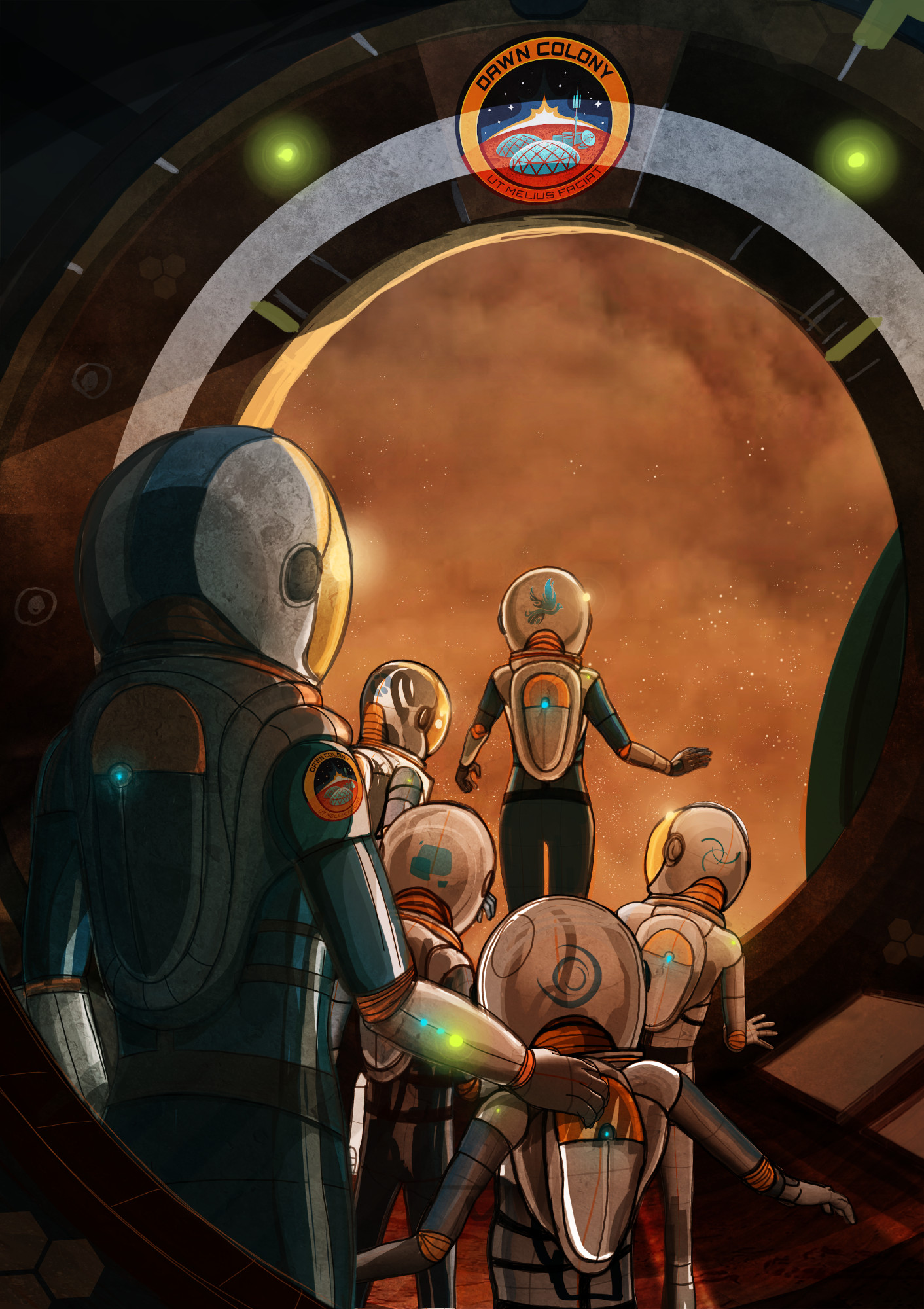
At the edge of the crevasse, Cas gave everyone another climbing lesson, this time incorporating the silent rope signals. One could never assume they would have comms.
“I will go down first to see if this thing takes us anywhere we want to go,” she said.
On this side of the crevasse, there were broken blocks they could use as belay anchors. Tony set up as before and Cas tied in. When she was ready, they exchanged their calls and Cas, once again, backed over the edge of a crevasse and descended into the darkness.
If this crack went as far as the one above, it should cross L6. It might even go to L7, near the location of the shelter, though they did not have enough rope to go that far in one pitch.
She slowly picked her way down. They had been in the mine long enough that she had become used to the eerie groans and pops of the ice. But as she dropped further and further from her friends above, into the darkness, into the unknown, she began to notice them again. Some, she could actually hear, as the sound waves in the thin air around her vibrated their way through her helmet and the thicker air inside. Most, she could only feel through her hands and feet where they touched the crevasse wall. She had been climbing for several minutes when she realized there was something different about those vibrations.
She paused at a small ledge, helmet pressed against the ice. She could hear a faint rhythmic thump. That’s weird, she thought. And it was. Everything she’d heard so far had been random noise made by the ice as it sorted itself out after the quake. The sounds were often startling, but they made sense. But this… she could not for the life of her think what would make such a regular thumping.
She realized she had been standing on the ledge for some time. She checked her O2 level. It was low but still safe. So, not hypoxia, she thought. I must just be tired. She shook her head and continued down. Several meters further, she paused again and leaned her helmet against the wall. The thumping was louder. Whatever was the source of that sound, she was apparently getting closer to it. She wasn’t exactly scared by this thought. More curious than anything. But she was also a little scared. She continued down.
Several more meters and she felt something touch her back. She jumped but did not lose her hold on the wall. She took a deep breath then turned to see what was touching her. She was surprised to see her helmet light reflected back by ice just centimeters from her visor. Between her concentration on the climb and rumination on the source of that thumping sound, she hadn’t notice that the crevasse had been getting narrower. She looked down. The crack continued to taper below her. She would not make much more progress there. She looked around. To her left, the crack widened a little. She climbed left and looked down. Still narrowing, but it looked like she could go a ways. She continued down.
A few meters more and she had to traverse left again. This time when she looked down her light was reflected up at her. Was that a bottom? Could it be L6? A wave of relief washed over her. She leaned her helmet against the wall to rest a moment and was greeted by the thumping, louder than ever. The relief vanished. Ok, she thought, time to face the thumper. She continued down.
When she reached the bottom, she realized she was in a grid tunnel. She had made it to L6! Shadows shifted in her light as she looked around. One of them moved differently than it should have. Her breathing froze and she backed away quickly, falling over an ice block. She scrambled to her feet and cast her light in the direction of the weird shadow. It was a figure. In a suit. Lying on the floor of the tunnel. In one hand was a block of ice. The figure dropped the ice and Cas felt the thump as it landed, just like the thumps she had been hearing. The figure raised the hand in the air and waved at her.
There was something wrong with the helmet the figure wore. It was smeared in black such that Cas couldn’t see a face and there was a thin stream of mist jetting out where nothing should be coming out, ever.
(excerpt from the first draft/WIP of Water: Generation Mars, Book Three)
image: created with Stable Diffusion



 Ars Technica
Ars Technica 







